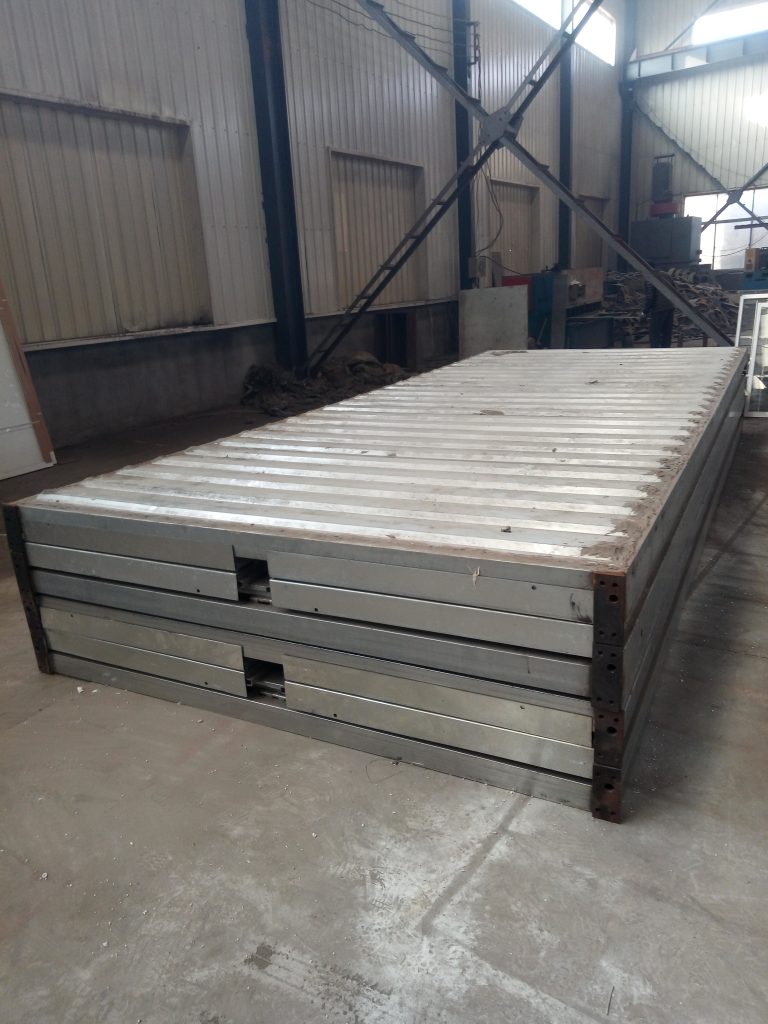Information management of steel structure during construction
Table of Contents
Benefits of Implementing Information Management Systems in Steel Structure Construction Projects
Information management plays a crucial role in the successful execution of steel structure construction projects. With the complexity and scale of such projects, having a robust system in place to manage and organize information is essential. Implementing information management systems can bring a multitude of benefits to construction companies, from improved efficiency to better decision-making processes.

One of the key benefits of implementing information management systems in steel structure construction projects is the ability to centralize and organize data. With multiple stakeholders involved in a construction project, having a centralized repository for all project-related information can streamline communication and collaboration. This ensures that all team members have access to the most up-to-date information, reducing the risk of errors and miscommunication.
Furthermore, information management systems can help improve project efficiency by automating repetitive tasks and workflows. By digitizing processes such as document management, scheduling, and budget tracking, construction companies can save time and resources that would otherwise be spent on manual tasks. This not only speeds up project timelines but also reduces the likelihood of errors and delays.
In addition to improving efficiency, information management systems can also enhance decision-making processes in steel structure construction projects. By providing real-time access to project data and analytics, construction companies can make informed decisions based on accurate and up-to-date information. This can help mitigate risks, optimize resource allocation, and ultimately improve project outcomes.
Another benefit of implementing information management systems in steel structure construction projects is the ability to track and monitor project progress in real-time. By capturing and analyzing data on key performance indicators such as project milestones, budget, and quality metrics, construction companies can identify potential issues early on and take corrective actions to keep the project on track.
Moreover, information management systems can also improve transparency and accountability in construction projects. By providing a clear audit trail of all project-related activities and decisions, construction companies can ensure compliance with regulations and standards, as well as demonstrate accountability to stakeholders such as clients, investors, and regulatory bodies.
Overall, the benefits of implementing information management systems in steel structure construction projects are clear. From centralizing and organizing data to improving efficiency, decision-making, and project monitoring, information management systems can help construction companies streamline processes, reduce risks, and ultimately deliver successful projects.
In conclusion, information management is a critical aspect of steel structure construction projects, and implementing robust systems can bring a multitude of benefits to construction companies. By centralizing and organizing data, improving efficiency, enhancing decision-making processes, and promoting transparency and accountability, information management systems can help construction companies achieve their project goals and deliver high-quality structures.
Best Practices for Organizing and Storing Information for Steel Structure Construction Projects
Information management is a crucial aspect of any construction project, especially when it comes to steel structure construction. With the complexity and scale of these projects, keeping track of all the necessary information is essential for ensuring the project’s success. From design plans and specifications to material orders and progress reports, there is a vast amount of information that needs to be organized and stored effectively.
One of the best practices for organizing and storing information for steel structure construction projects is to establish a centralized system for document management. This system should include a digital repository where all project-related documents can be stored and accessed by all relevant stakeholders. By centralizing the storage of information, project teams can ensure that everyone is working from the most up-to-date documents and avoid the confusion that can arise from multiple versions of the same document floating around.
In addition to centralizing document storage, it is also important to establish clear naming conventions and file structures to make it easy to locate and retrieve information when needed. By organizing documents into folders based on project phase, discipline, or document type, project teams can quickly find the information they need without wasting time searching through a cluttered file system.
Another best practice for information management in steel structure construction projects is to implement a document control process that governs how documents are created, reviewed, approved, and distributed. This process should include clear guidelines for document naming, version control, and access permissions to ensure that only authorized personnel have access to sensitive information.
Furthermore, project teams should regularly review and update their document management processes to ensure that they are meeting the project’s evolving needs. As the project progresses and new information is generated, it is important to assess whether the current document management system is still effective or if adjustments need to be made to accommodate the changing requirements of the project.
Transitional phrases such as “in addition,” “furthermore,” and “moreover” can help guide the reader through the article and connect ideas seamlessly. By using these transitional phrases, the article can flow smoothly from one best practice to the next, providing a comprehensive overview of how to effectively organize and store information for steel structure construction projects.
In conclusion, effective information management is essential for the success of steel structure construction projects. By centralizing document storage, establishing clear naming conventions and file structures, implementing a document control process, and regularly reviewing and updating document management processes, project teams can ensure that they have the information they need to complete the project on time and within budget. By following these best practices, project teams can streamline their workflows, improve collaboration among stakeholders, and ultimately deliver a successful steel structure construction project.







